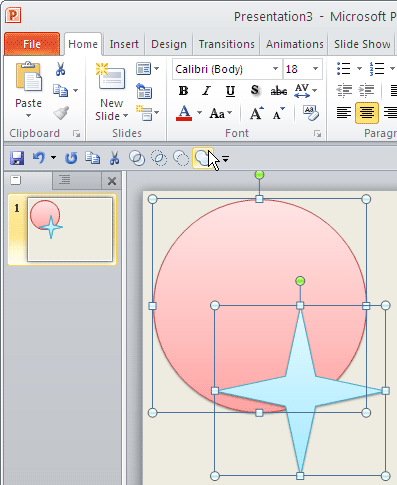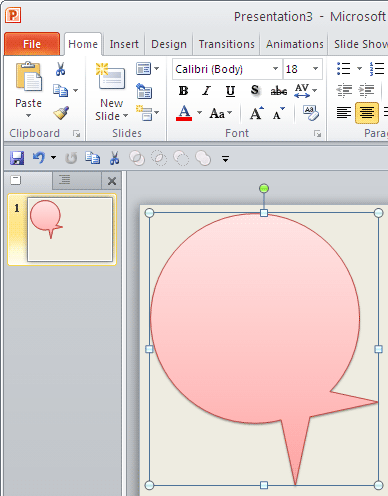Learn how you can unite shapes in PowerPoint 2010 for Windows. The Shape Union command combines all overlapping and non-overlapping areas of shapes.
Author: Geetesh Bajaj
Product/Version: PowerPoint 2010 for Windows
OS: Microsoft Windows XP and higher
We have already explored three of the four Combine Shape commands in PowerPoint: Combine, Intersect, and Subtract—and now we show you how you can use Union, the fourth and the last command of this quartet. In this tutorial, we'll show you how you can take two or more shapes and unite them. For example, we surrounded a circle with several stars over a donut shape as shown towards the left of Figure 1. With these shapes selected, we could use the Shape Union command that we explain later in this tutorial to create a united shape as shown towards the right in Figure 1.

Figure 1: Sample showing use of the Shape Union command
Once you finish reading this tutorial, do view the sample presentations embedded on the bottom of this page to see more samples of shapes that use the Shape Union command.
The Shape Union command is one of the four new Shape commands that are not visible by default in PowerPoint 2010 for Windows. You need to enable them as explained in Add Combine Shapes Commands to the Quick Access Toolbar (QAT) in PowerPoint 2010 for Windows. Thereafter, follow these steps:


Do remember these guidelines for any tasks that involve the usage of this command. The Shape Union command:
You will see these guidelines in use within the embedded presentations below (scroll down this page).
Click below to view this presentation on SlideShare
Click below to view this presentation on YouTube
See Also:
Merge Shapes: Shape Union Command in PowerPoint (Index Page)
Shape Union Command in PowerPoint 2016 for WindowsYou May Also Like: The Importance of Screen Calibration | Lines PowerPoint Templates



Microsoft and the Office logo are trademarks or registered trademarks of Microsoft Corporation in the United States and/or other countries.